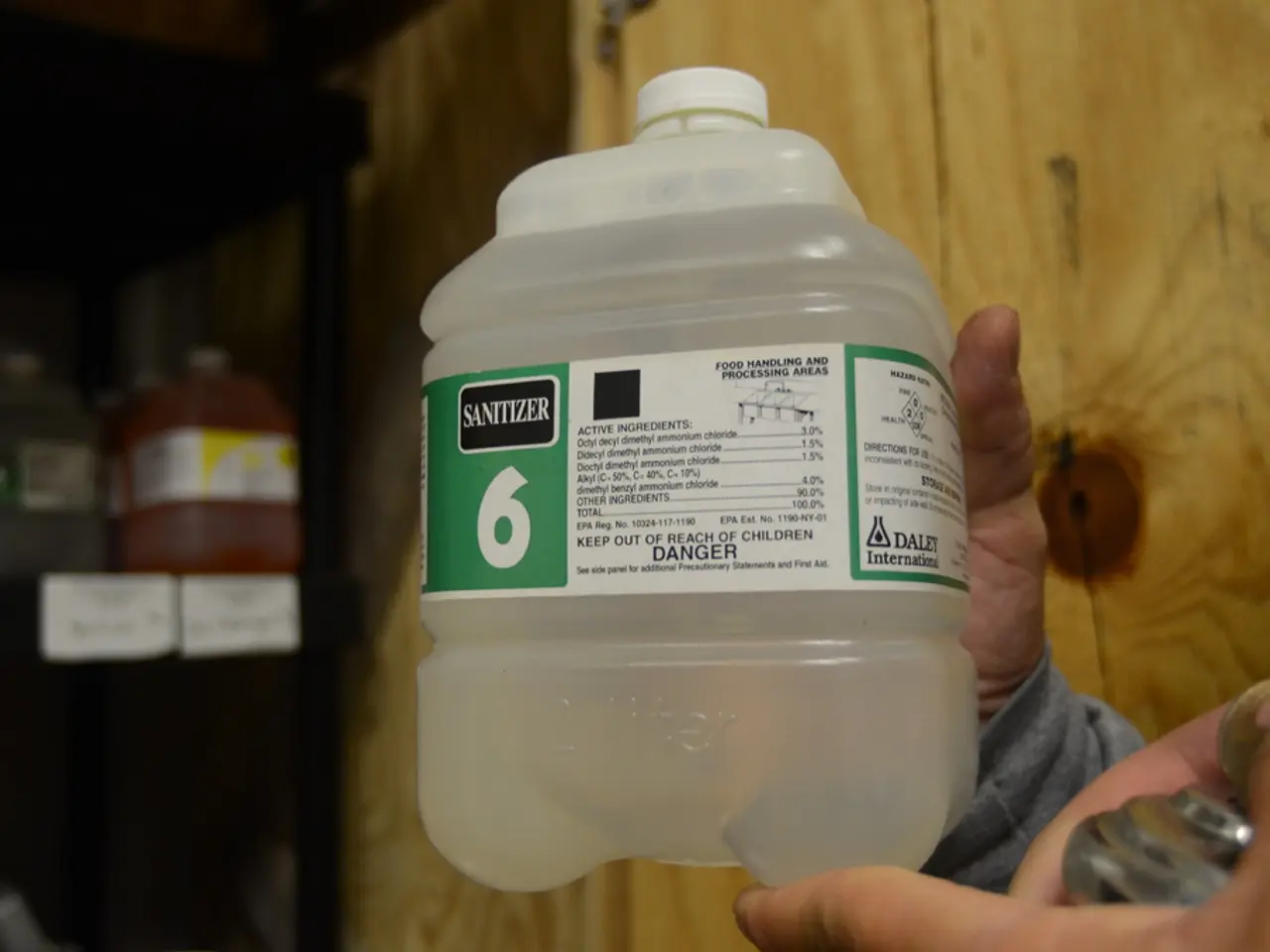Brucellosis Explained: Understanding Its Methods of Spread, Causes, and Remedies
In the United States, certain activities can increase the risk of coming into contact with the Brucella bacteria, such as travel to certain regions, occupations involving animals, and hunting wild animals. This article aims to shed light on the typical animals that carry Brucella bacteria in the U.S., the role they play in the transmission of the disease, and the implications for human health.
The primary domestic animals that serve as the natural reservoirs for brucellosis in the U.S. are cattle, bison, sheep, goats, swine, and dogs. Cattle and bison are primarily infected with Brucella abortus, a species that can potentially cause outbreaks. Sheep and goats commonly carry Brucella melitensis, a species that is not currently found in the U.S., but can be a common source for human cases, especially via the consumption of unpasteurized dairy products. Swine are mainly infected with Brucella suis, and Brucella canis can be found in domestic dogs.
Bison herds in the Rocky Mountain plains have recently become infected, potentially posing a transmission risk to domestic cattle. Brucellosis can enter the body through the eyes, mouth, or cuts in the skin, and the majority of brucellosis cases in humans in the U.S. are linked to consumption of unpasteurized goat milk products, occupational exposures such as in veterinarians, farmers, meat-packing workers, and others who have close contact with these animals or their products.
Dogs can carry Brucella bacteria in the U.S. and Canada, but there is no standard veterinary treatment. Complications of Brucellosis can include endocarditis, kidney damage, liver damage, problems with blood clotting, blood poisoning, encephalitis, stroke, and more. Treatment for Brucellosis typically involves a combination of antibiotics, doxycycline and rifampin, for 6-8 weeks.
In fewer than 10% of people who receive antibiotic treatment for Brucellosis, symptoms may reappear. A doctor may request a blood test called a serum agglutination test to diagnose Brucella infection. Anyone with symptoms of Brucellosis complications should also receive professional care.
It is important to note that Brucella bacteria can be contracted by consuming uncooked meat or unpasteurized dairy products. When to see a doctor includes if flu-like symptoms develop after coming into contact with wild animals, traveling abroad, drinking unpasteurized milk, or consuming unpasteurized dairy, or eating undercooked meat.
Brucella melitensis is carried by goats and sheep and is not currently found in the U.S., while Brucella ceti and pinnipedium are found in marine mammals and rarely infect people. Brucella abortus is found in some cows, wild elk, and bison in the U.S.
In conclusion, understanding the animals that carry Brucella bacteria in the U.S. and the potential risks they pose is crucial for public health. By being aware of the sources of the disease and taking precautions such as avoiding unpasteurized dairy products and properly cooking meat, individuals can significantly reduce their risk of contracting brucellosis. If symptoms do develop, seeking prompt medical attention is essential for effective treatment and management of the disease.
- Other bacterial infections, such as brucellosis, are infectious and can have severe impacts on human health and wellness.
- Science plays a vital role in understanding medical conditions like brucellosis, helping to identify the causes and develop therapies and treatments.
- Chronic diseases, like brucellosis, can have long-lasting effects on an individual's fitness and exercise routines, as well as their overall lifestyle.
- Climate change can affect the distribution and prevalence of some infectious diseases, including other bacterial infections like brucellosis.
- Mental health is also influenced by factors such as the stress of dealing with chronic diseases like brucellosis.
- Taking care of skin can help prevent the entry of infectious agents like those causing brucellosis, as cuts or wounds can serve as points of entry.
- This research contributes to the broader field of environmental science, which touches on many aspects of our lives, including health and wellness.
- Finance plays a role in managing healthcare costs, especially when it comes to treating complex and chronic diseases like brucellosis.
- Space and astronomy may seem unrelated, but understanding the impact of microgravity on bacterial growth could potentially inform research on other bacterial infections like brucellosis.
- Entrepreneurship enables the development of innovative solutions to address challenges like those posed by infectious diseases, including other bacterial infections.
- Interior design can indirectly impact health by promoting a clean and hygienic environment, reducing the risk of spread of infectious diseases like brucellosis.
- Cooking is an essential practice to ensure the safety of food and drink, reducing the risk of contracting other bacterial infections like brucellosis from contaminated products.
- Leadership is crucial in managing public health crises, including those related to infectious diseases like brucellosis.
- Diversity and inclusion are important in the scientific community, promoting a broader understanding of various medical conditions, including other bacterial infections like brucellosis.
- Wearables and smart home devices can improve health monitoring, helping to detect signs of infectious diseases like brucellosis early.
- Cybersecurity is relevant to the healthcare sector, protecting sensitive patient data related to conditions like brucellosis.
- Lifestyle choices can impact the risk of contracting infectious diseases like brucellosis, with factors such as diet and exercise playing key roles.
- Outdoor living can expose individuals to a variety of pathogens, including those causing other bacterial infections.
- Fashion and beauty products can potentially harbor bacteria, although the risk is generally lower compared to other sources of infection like those carrying brucellosis.
- Food and drink play a significant role in transmitting infectious diseases like brucellosis, highlighting the importance of proper food handling and cooking practices.
- Dining out and consuming food from unknown sources increases the risk of exposure to various pathogens, including those causing other bacterial infections.
- Investing in businesses that focus on health and wellness, such as those offering therapies and treatments for infectious diseases like brucellosis, can be a smart move.
- Wealth management strategies can help individuals cope with the financial burden of dealing with chronic diseases like brucellosis.
- Home and garden pursuits, like gardening and home improvement, can offer opportunities to practice sustainable living, reducing the impact of climate change on various diseases, including other bacterial infections.
- Baking and other culinary activities can provide outlets for personal expression and stress relief, although it's crucial to take food safety precautions to prevent the spread of infectious diseases like brucellosis.
- Beverages, like milk and other dairy products, can be sources of infectious agents, emphasizing the importance of pasteurization to eliminate pathogens, such as those causing other bacterial infections.
- Love, careers, and personal relationships can all be impacted by the burden of chronic diseases like brucellosis.
- Businesses, careers, and venture capital often have a focus on innovative solutions, such as treatments for infectious diseases like brucellosis, as they look to make a positive impact on people's lives.





